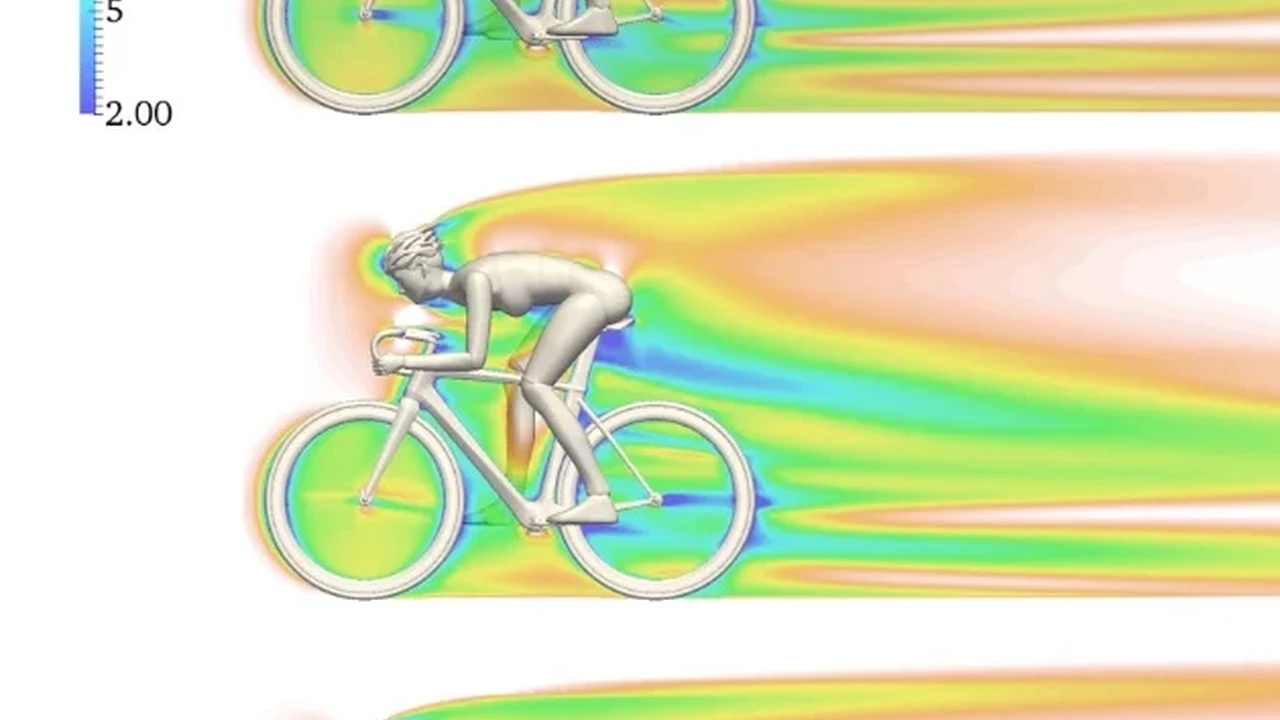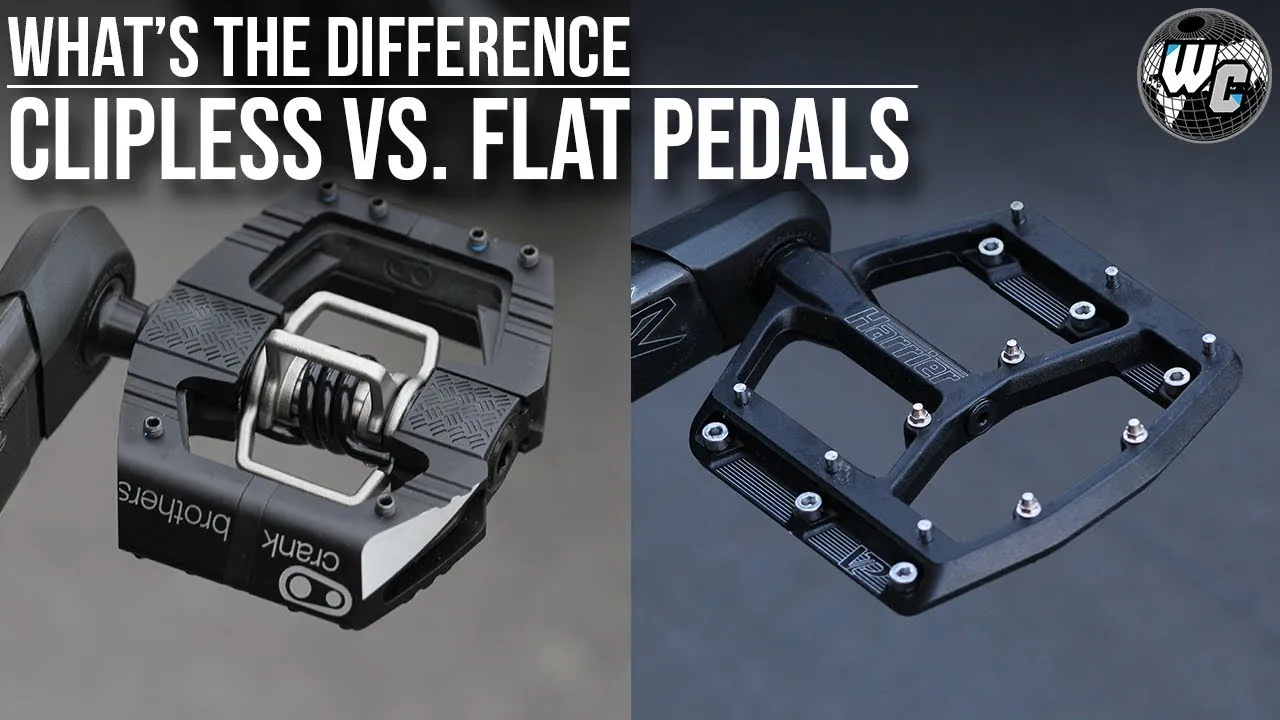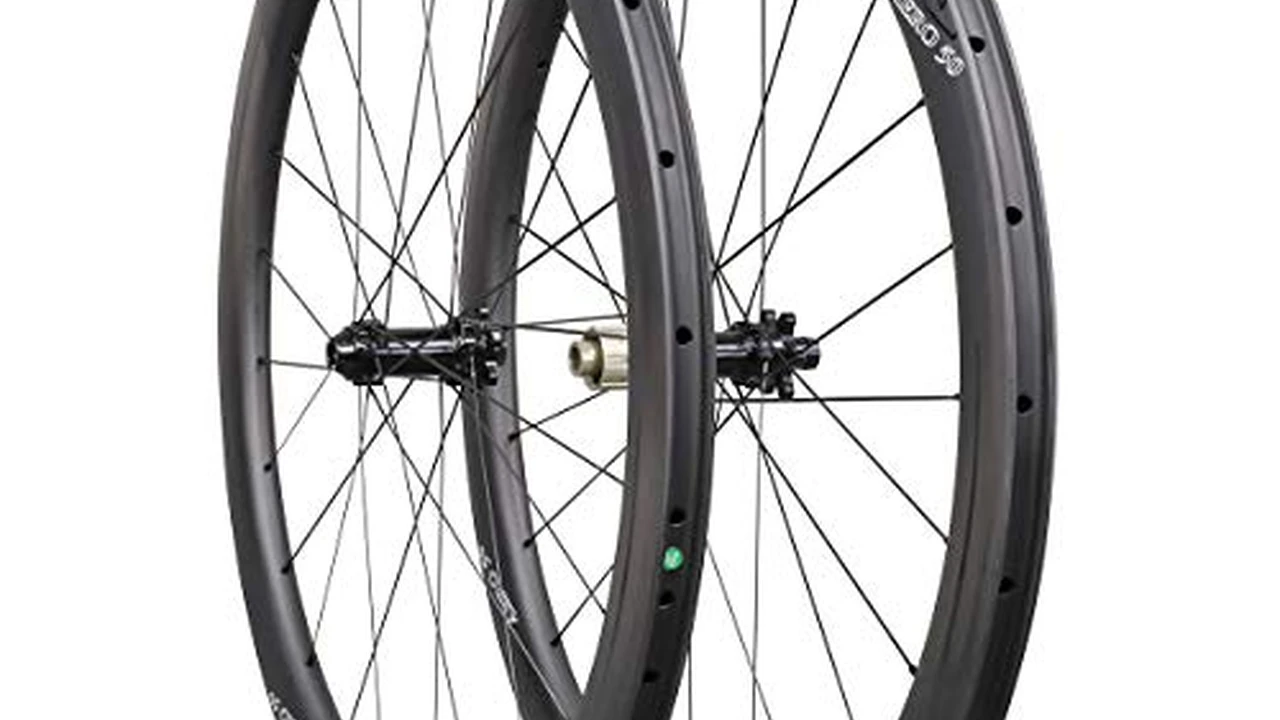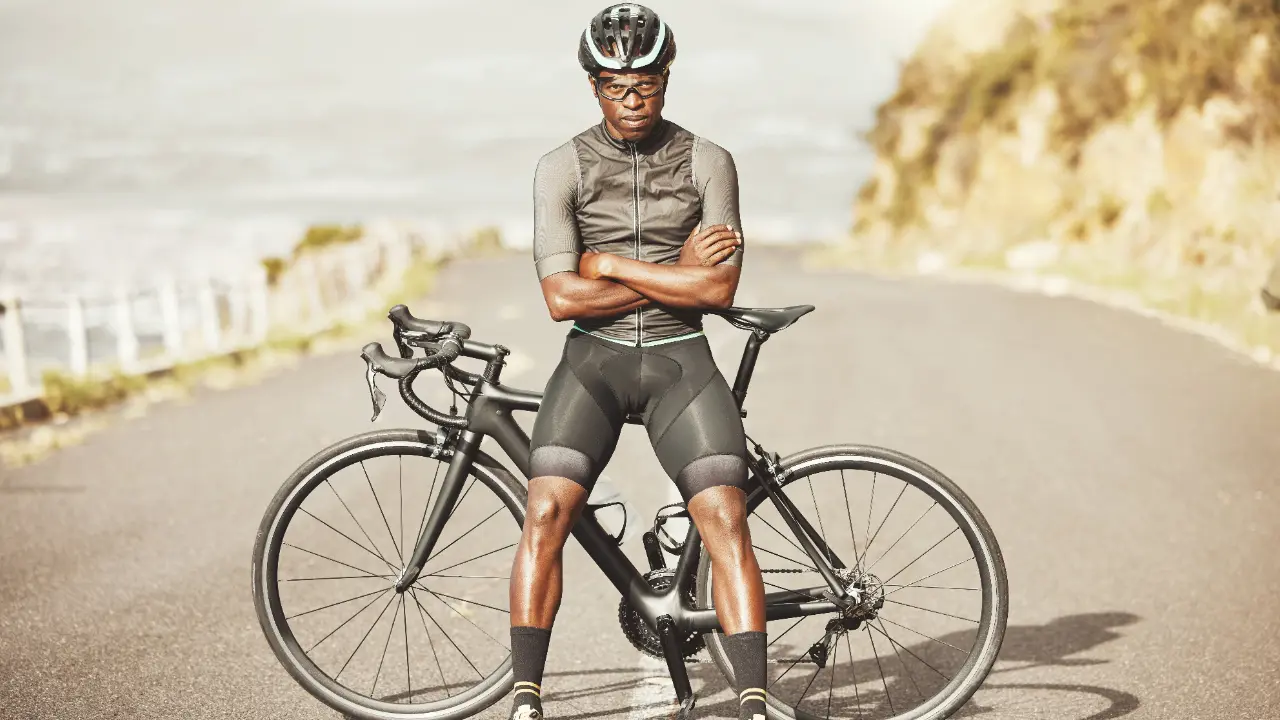Aerodynamics for Road Cycling_ Reducing Drag
Aerodynamics plays a crucial role in road cycling, significantly impacting your speed and efficiency. Reducing drag, the force that opposes your motion, can lead to substantial improvements in performance, whether you're racing or simply enjoying a leisurely ride. This guide delves into the principles of aerodynamics, practical techniques to minimize drag, and specific product recommendations to help you achieve optimal aerodynamic performance on your road bike.

Welcome, fellow cyclists! Ever wondered why some riders seem to effortlessly glide ahead while you're battling the wind? The secret often lies in aerodynamics. Reducing drag, or wind resistance, is crucial for maximizing your speed and efficiency on the road. This isn't just for the pros; even small improvements can make a noticeable difference in your performance and enjoyment. Let's dive into the world of aerodynamics and discover how you can cut through the air like a hot knife through butter.
Understanding the Science Behind Cycling Aerodynamics and Drag Reduction
First things first, let's break down the science. Drag is essentially the force that opposes your forward motion. It's created by the air flowing around you and your bike. The faster you go, the more drag you experience. Drag is made up of two primary components: pressure drag and friction drag.
Pressure drag is caused by the difference in air pressure between the front and rear of you and your bike. Friction drag, on the other hand, is the resistance created by the air flowing over the surface of you and your bike. Both contribute to the overall drag you experience.
Several factors influence drag, including your body position, the shape of your bike and components, and even your clothing. Understanding these factors is the first step towards optimizing your aerodynamics.
Optimizing Your Body Position for Maximum Aerodynamic Efficiency
Your body position is the single most significant factor affecting your aerodynamic drag. A more streamlined position presents less surface area to the wind, reducing drag considerably. Here are some key techniques to improve your body position:
- Lower Your Torso: This is the golden rule. By lowering your torso, you reduce the amount of frontal area exposed to the wind. Try bending at the hips and keeping your back relatively flat.
- Tuck Your Elbows: Bringing your elbows closer to your body reduces your overall width, minimizing drag. Think about forming a narrow profile.
- Keep Your Head Down: Look down the road with your eyes, rather than lifting your head. This helps maintain a streamlined position.
- Use Your Core: Maintaining a good aero position requires core strength. Engage your core muscles to support your torso and prevent back pain.
These techniques take practice and can feel uncomfortable at first. Start by incorporating small changes into your rides and gradually increase the amount of time you spend in an aero position. Remember to prioritize comfort and safety. Don't sacrifice control or visibility for aerodynamics.
The Role of Aerodynamic Cycling Gear: Helmets, Clothing, and Shoes
Beyond body position, your gear plays a crucial role in reducing drag. Aerodynamic cycling gear is designed to minimize air resistance and improve your overall efficiency. Let's take a look at some key items:
Aerodynamic Cycling Helmets: A Comparison of Top Brands
Aerodynamic helmets are designed to smooth airflow around your head, reducing drag compared to traditional helmets. They often feature elongated shapes and fewer vents. Here are a few popular options:
- Giro Vanquish: Known for its excellent aerodynamics and ventilation. It's a great all-around option for road cycling and triathlon. Price: $275.
- Specialized S-Works Evade 3: Another top contender, offering a balance of aerodynamics, ventilation, and comfort. Price: $300.
- Bell Zephyr MIPS: Provides excellent protection and aerodynamics, with MIPS technology for added safety. Price: $250.
When choosing an aerodynamic helmet, consider factors such as fit, ventilation, and weight. Try on different models to find the one that best suits your head shape and riding style. The Giro Vanquish is a great choice for its versatility, while the Specialized S-Works Evade 3 offers a more aggressive aerodynamic profile.
Aerodynamic Cycling Clothing: Skinsuits and Jersey/Bib Short Combinations
Aerodynamic clothing, such as skinsuits and tight-fitting jerseys and bib shorts, can significantly reduce drag by smoothing airflow over your body. These garments are made from specialized fabrics that minimize air resistance.
- Castelli Free Sanremo 4.1 Speed Suit: A top-of-the-line skinsuit designed for maximum aerodynamic performance. Ideal for time trials and races. Price: $400.
- Assos Equipe RS S9 Targa Bib Shorts: Premium bib shorts offering excellent comfort and aerodynamic performance. Price: $350.
- Rapha Pro Team Aero Jersey: A tight-fitting jersey designed to minimize drag. A great option for everyday riding and racing. Price: $200.
When choosing aerodynamic clothing, look for garments made from smooth, close-fitting fabrics. Consider the fit and comfort, as you'll be wearing these items for extended periods. A good jersey and bib short combination can provide a significant aerodynamic advantage without the commitment of a full skinsuit.
Aerodynamic Cycling Shoes: Shoe Covers and Integrated Designs
Even your shoes can contribute to drag. Aerodynamic shoe covers can smooth airflow over your shoes, reducing resistance. Some shoe manufacturers also offer integrated aerodynamic designs.
- Castelli Tempo Shoe Covers: Designed to improve aerodynamics and provide warmth in cool conditions. Price: $60.
- Specialized S-Works Ares Shoes: High-performance shoes with an aerodynamic design. Price: $450.
- Giro Imperial Shoes: Lightweight and aerodynamic shoes offering excellent comfort and performance. Price: $350.
Shoe covers are a relatively inexpensive way to improve your aerodynamics. Integrated aerodynamic shoes offer a more comprehensive solution, but they come with a higher price tag. Consider your budget and priorities when choosing aerodynamic footwear.
Upgrading Your Bike Components for Improved Aerodynamic Performance
Your bike's components also play a significant role in aerodynamics. Aerodynamic wheels, handlebars, and frames can all contribute to reducing drag. While these upgrades can be expensive, they can provide substantial performance gains.
Aerodynamic Cycling Wheels: Deep Section Wheels for Speed
Wheels are one of the most important components to consider when upgrading for aerodynamics. Deep-section wheels, with their taller rim profiles, are designed to reduce drag and improve stability. Here are a few popular options:
- Zipp 404 Firecrest: A classic aerodynamic wheelset known for its speed and versatility. Price: $2500.
- Enve SES 5.6: Another top contender, offering excellent aerodynamics and handling in various conditions. Price: $3000.
- Roval Rapide CLX: A fast and stable wheelset with a competitive price point. Price: $2800.
When choosing aerodynamic wheels, consider factors such as rim depth, weight, and braking performance. Deeper rims generally offer better aerodynamics but can be more challenging to handle in crosswinds. The Zipp 404 Firecrest is a popular choice for its all-around performance, while the Enve SES 5.6 is known for its stability in windy conditions.
Aerodynamic Handlebars and Stems: Integrated Cockpits for Reduced Drag
Aerodynamic handlebars and stems, often integrated into a single cockpit, are designed to reduce drag and improve comfort. These components can help you maintain a more aerodynamic position and reduce fatigue.
- Vision Metron 5D Integrated Handlebar: A popular choice for its aerodynamic design and comfortable ergonomics. Price: $600.
- PRO Vibe Evo Handlebar: Offers excellent adjustability and aerodynamic performance. Price: $500.
When choosing aerodynamic handlebars and stems, consider factors such as fit, comfort, and adjustability. An integrated cockpit can provide a significant aerodynamic advantage but may be less adjustable than traditional handlebars and stems. The Vision Metron 5D is a popular choice for its sleek design and comfortable hand positions.
Aerodynamic Bike Frames: Frame Shapes Designed for Speed
Aerodynamic bike frames are designed to minimize drag and improve overall efficiency. These frames often feature airfoil shapes and integrated components. Upgrading to an aerodynamic frame can be a significant investment, but it can provide substantial performance gains.
- Cervelo P5X: A high-performance triathlon bike designed for maximum aerodynamic efficiency. Price: $12000.
- Specialized Shiv: Another top contender in the triathlon bike category, offering excellent aerodynamics and integration. Price: $11000.
When choosing an aerodynamic bike frame, consider factors such as fit, comfort, and handling. These frames are often designed for specific disciplines, such as time trialing or triathlon. The Cervelo P5X and Specialized Shiv are both excellent choices for athletes seeking maximum aerodynamic performance.
Practical Tips for Reducing Drag on Your Rides
Beyond gear and body position, there are several other practical tips you can follow to reduce drag on your rides:
- Ride in a Group: Drafting behind another rider can significantly reduce your drag. This is a common tactic in road racing and group rides.
- Choose Smooth Roads: Rough roads create more friction and increase drag. Opt for smoother surfaces whenever possible.
- Maintain Your Bike: A clean and well-maintained bike is more aerodynamic than a dirty or poorly maintained one. Keep your drivetrain clean and lubricated, and ensure your tires are properly inflated.
- Shave Your Legs: While it may seem trivial, shaving your legs can actually reduce drag by a small amount. This is a common practice among competitive cyclists.
By incorporating these tips into your riding routine, you can further optimize your aerodynamics and improve your performance.
Final Thoughts on Optimizing Aerodynamics
Optimizing your aerodynamics is a continuous process. Experiment with different techniques and gear to find what works best for you. Remember to prioritize comfort and safety, and don't be afraid to ask for advice from experienced cyclists or coaches. With a little effort and attention to detail, you can unlock significant performance gains and enjoy your rides even more.
:max_bytes(150000):strip_icc()/277019-baked-pork-chops-with-cream-of-mushroom-soup-DDMFS-beauty-4x3-BG-7505-5762b731cf30447d9cbbbbbf387beafa.jpg)






